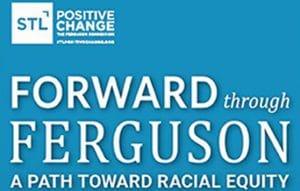
The Michael Brown shooting and subsequent protests which brought unrest and international media attention to Ferguson, Missouri also brought, by Governor Jay Nixon’s Executive Order 14-15, a diverse, empowered group of community leaders together to form the Ferguson Commission. Its charge was to study the underlying social and economic conditions prevalent in the St. Louis area and make recommendations for action. Several working groups were established to address concerns in “poverty, education, governance, and law enforcement”[1]; these working groups convened over the course of ten months to discuss and develop ideas that could make the St. Louis area a safer, fairer place for all of its residents.
In an “unflinching” report to the Governor, the Commission’s assessment revealed inequities across the board from how minorities are treated by law enforcement, in the courts, and in the education system to receiving unequal access to healthcare, transportation and economic mobility[2]. Overarching “Signature” priorities were identified including “Justice For All, Youth at the Center, Opportunity to Thrive and Racial Equity” as well as 189 Calls to Action[3]. The report, written for the citizen audience, provides data and justification for sweeping changes, that if implemented through public support, legislation, funding and policy promises a better future for St. Louisans.
The Institute of Public Policy, of the Harry S Truman School of Public Affairs contributed data and policy analysis to support the Commission and working groups. Emily Johnson, Associate Director of the Institute, managed IPP’s role in the project. The Ferguson Report, entitled Forward Through Ferguson, A Path Toward Racial Equity was released on September 14th.
1,2,3 Forward Through Ferguson, A Path Toward Racial Equity, 2015 http://forwardthroughferguson.org/wpcontent/uploads/2015/09/FergusonCommissionReport_091415